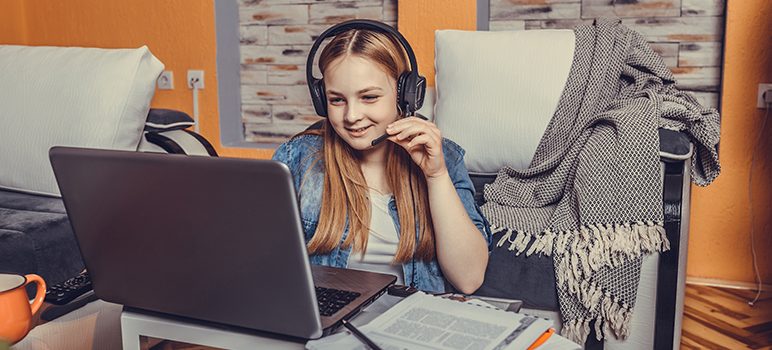More than a month since officials closed schools due to Covid-19, California leaders said a two-week blitz led by First Partner Jennifer Siebel Newsom has brought in 70,000 computers and other devices that will be distributed to needy students this week.
Gov. Gavin Newsom has stressed the importance of distance learning and education multiple times during the past month—even talking about helping his own children with school work. Monday he focused attention on his administration’s efforts to secure donations from tech giants such as Google and Apple, garnering tens of thousands of computers and internet connections to children in need.
“For class to be in session, it is imperative that California addresses the inequities in access to computers, technology tools and connectivity to ensure that online learning can in fact reach all of California’s children,” Newsom said.
In addition, in Sacramento, the city is converting seven transit buses into super hotspots. Google is to begin establishing the first of 100,000 previously pledged hotspots during the first week of May. Already, Apple has distributed 10,000 iPads to 800 school districts and Google has given out 4,000 laptops.
Yet, even with all of the new devices going out in the coming weeks, it’s unclear if all of these efforts will really make a dent in the gap—highlighted by the pandemic—between those who have digital access and those who do not.
Siebel Newsom said one in five California children does not have connectivity or a device to access remote learning. Based on 2018-19 enrollment data, that means roughly 1.2 million children in California lack access.
“We all know that education is fundamental to opportunity and our mission will not end until every child has what they need to continue learning,” she said.
Previously, State Superintendent of Public Instruction Tony Thurmond said that the state is trying to get 150,000 devices in the hands of students who don’t have one.
This is especially critical for low-income students and students of color, Siebel Newsom said, referring to a recent study that showed 50 percent of low-income parents and 42 percent of parents of color “are worried about distance learning because they don’t have a personal device at home.”
Newsom also indicated the state will spend $30 million to connect more households that need it. Most of those funds, $25 million, will come from the California Teleconnect Fund and will be prioritized for rural, small and medium-sized districts.
The California Public Utilities Commission will also prioritize $5 million of the $30 million for computers for low-income communities.
The state Transportation Agency is teaming up with the city of Sacramento to convert the seven city buses into rolling super hotspots and get them going by May 1.
These buses will provide connectivity within at least a 500-foot radius. Locations for the buses haven’t been announced. This is a pilot program that may be rolled out in other cities if it proves successful, according to Newsom’s office.
Since California began to track cases of coronavirus in the state, there have been 1,208 deaths, including 42 over the past weekend. Newsom said he will reveal a more detailed plan for opening up the state on Wednesday.
“We are not seeing the downward trend we need to see to provide more clarity on the roadmap to recovery,” he said.
CalMatters.org is a nonpartisan media venture explaining state policies and politics.


I thought every kid in the America has a cell phone. Why can’t they use those?
Yeah, Newsom could issue another edict requiring all cell phone plans have unlimited data at no extra charge.
There’s this cool new invention. It’s called a book.
Abe Lincoln didn’t have distance learning or even an iPad to make his notes. So he used a piece of charcoal on a back of a shovel.
Come on Bubble, todays kids would even know what a shovel is much less own one.